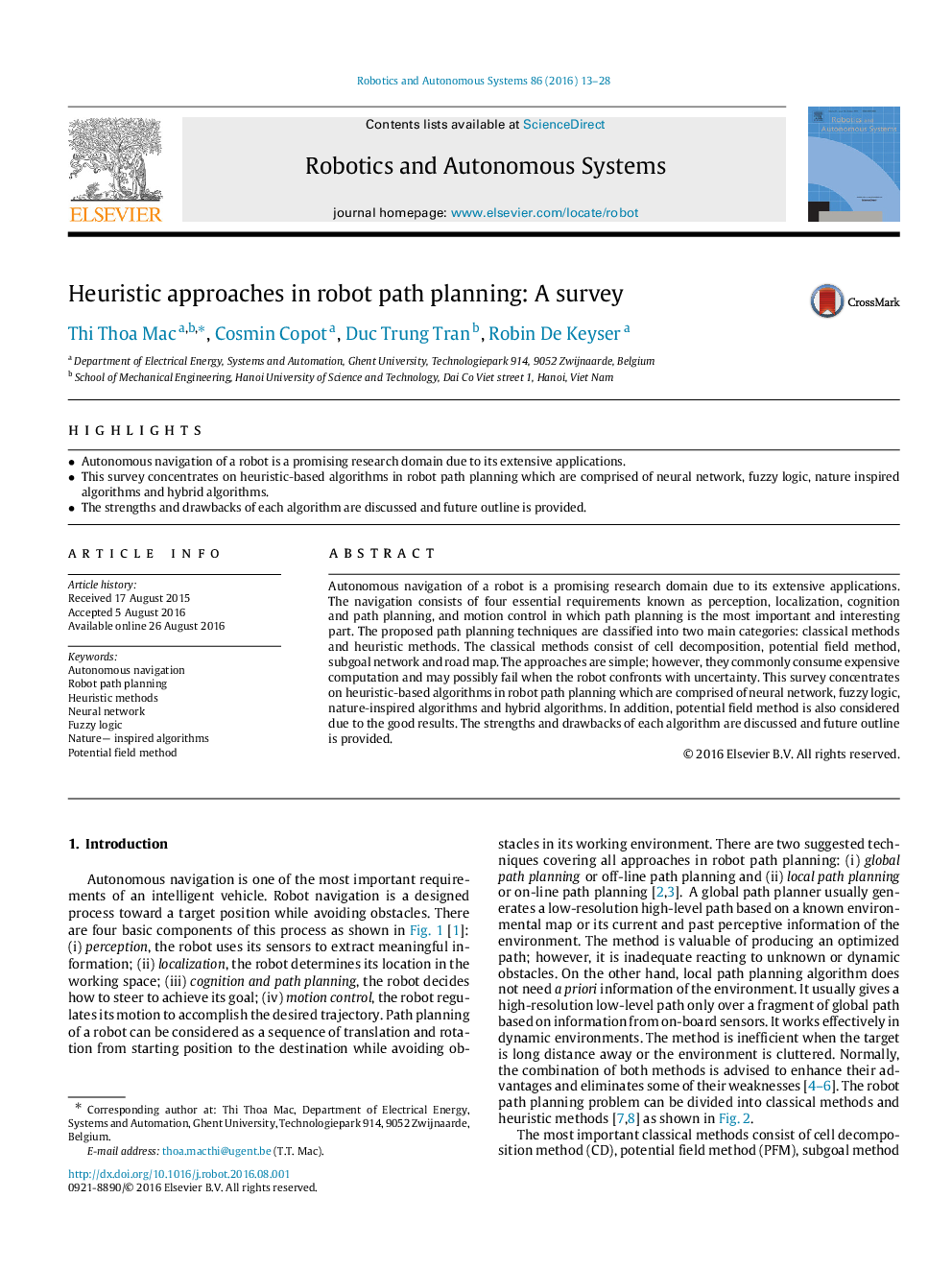| Article ID | Journal | Published Year | Pages | File Type |
|---|---|---|---|---|
| 4948907 | Robotics and Autonomous Systems | 2016 | 16 Pages |
Abstract
Autonomous navigation of a robot is a promising research domain due to its extensive applications. The navigation consists of four essential requirements known as perception, localization, cognition and path planning, and motion control in which path planning is the most important and interesting part. The proposed path planning techniques are classified into two main categories: classical methods and heuristic methods. The classical methods consist of cell decomposition, potential field method, subgoal network and road map. The approaches are simple; however, they commonly consume expensive computation and may possibly fail when the robot confronts with uncertainty. This survey concentrates on heuristic-based algorithms in robot path planning which are comprised of neural network, fuzzy logic, nature-inspired algorithms and hybrid algorithms. In addition, potential field method is also considered due to the good results. The strengths and drawbacks of each algorithm are discussed and future outline is provided.
Keywords
Related Topics
Physical Sciences and Engineering
Computer Science
Artificial Intelligence
Authors
Thi Thoa Mac, Cosmin Copot, Duc Trung Tran, Robin De Keyser,
